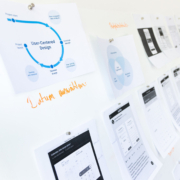LS Central and Inventory Control
All of the Inventory in your store can be thought of as tied up capital. Its money spent for a future sale that hasn’t happened yet. Managing your inventory is a delicate balance because you must ensure
1. that you do not have excess inventory you cannot sell and
2. that you have enough stock to satisfy customer demands.
From the perspective of someone outside of the retail space, a sold-out item on the surface may seem like a success; a business was successfully able to sell 100% of its stock. They can simply order a higher quantity next time and the cycle will continue. A customer could even buy a substitute item if something is out of stock.
Although this this type of inventory control might appear as a successful business model, it has a drastic effect on customer loyalty. If you don’t have a product that the customer wants, they will eventually move on to a store that has what they want and never look back. Amazon, with its many options and suppliers, has become a catalyst for this kind of consumer behavior. According to the Harvard Business Review (https://hbr.org/2004/05/stock-outs-cause-walkouts), up to 43% will go to another store to buy the item (Note: this was published in 2004, you can imagine what the rate is now). The importance of keeping inventory at a safe level, both not holding up unnecessary capital, and ensuring you do not sell-out is paramount in today’s environment. But how do you determine the optimal amounts of products to keep on hand and when to reorder stock?
Luckily, LS Central has a robust replenishment module that tracks previous sales and can automatically create purchase orders based on previous sales or trends which are all recorded within LS Central. This is a very powerful tool within LS Central and can be customized for every item within your business or from a group of products.
Sandham Adams has extensive knowledge of LS Central which can be used to overcome this inventory control balancing act and help solve many other business issues. We’d love to tell you more. To book a demo of LS Central, please contact us at 416-225-2265.






